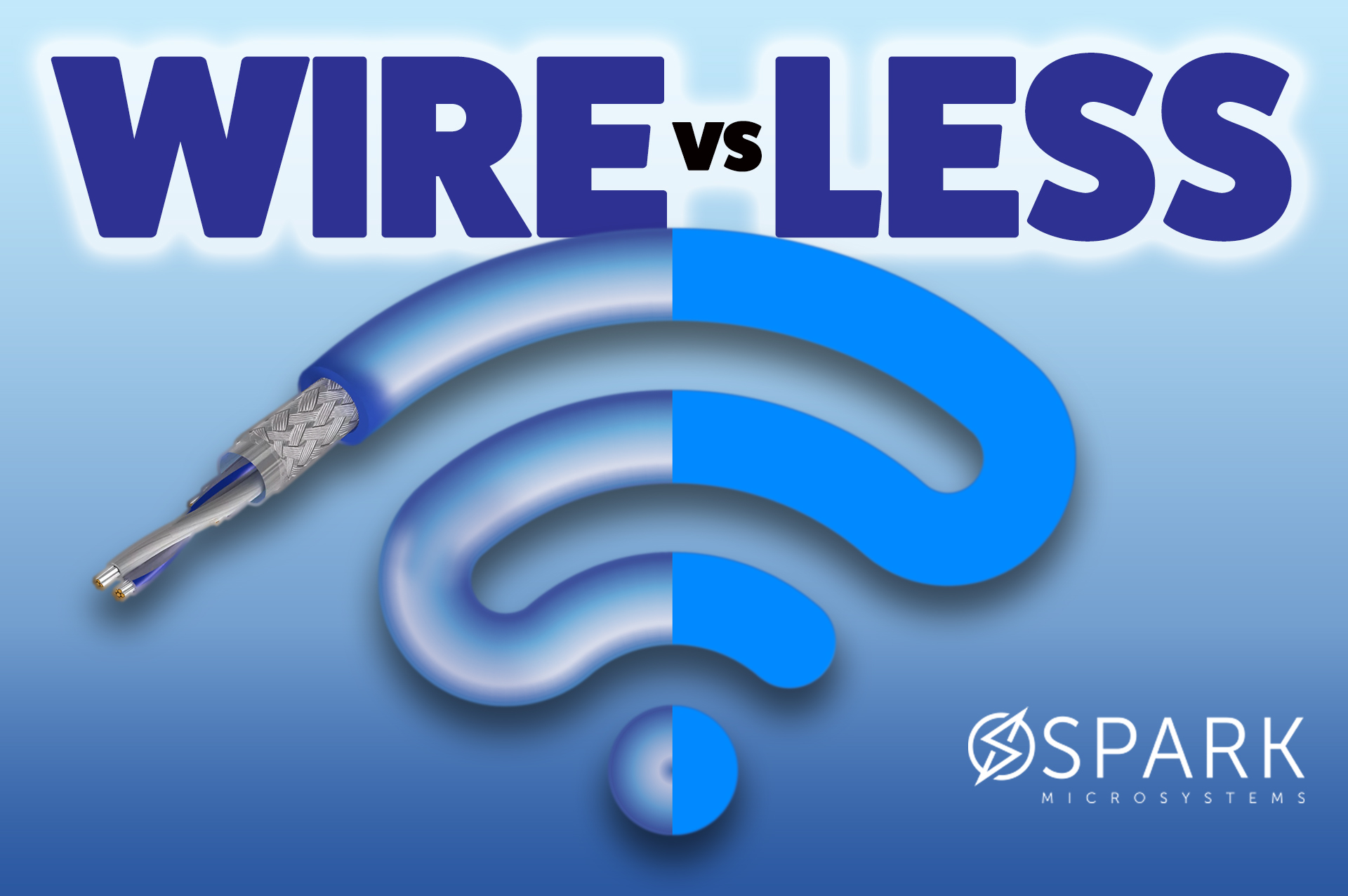Products
Solutions
Published
8 May 2025
Written by Emily Curryer
Let’s face it—when it comes to wireless, we’ve all made sacrifices. You compromise latency for convenience, throughput for battery life, and robustness for price. But what if you didn’t have to?
At Embedded World 2025, SPARK Microsystems made one thing clear: wireless doesn’t have to mean “less.” Their near-wireless performance for low-latency applications pushes the boundaries of what’s possible—bridging the gap between the cable and the cloud.
Why Wires Still Win (Until Now)
Fred from SPARK broke it down into four harsh realities of legacy wireless:
- Latency – Bluetooth can rack up 100ms+ of delay. For audio, that’s audible. For robots, it’s chaos.
- Throughput – BLE maxes out at ~200kbps. Video, uncompressed audio, or rich haptics? Forget it.
- Power – Wi-Fi drains batteries; Bluetooth sips, but offers little bandwidth.
- Interference – The 2.4GHz band is a battlefield. Ask anyone who’s ever lost a connection mid-Zoom.
Cue Spark Microsystems.
Solving the Wireless Four Horsemen
SPARK’s ultra-wideband (UWB) solution takes a fresh approach to RF design. Their chips use the 6–9.2 GHz range, providing up to 3 GHz of agile bandwidth, allowing it to sidestep interference like a pro.
In terms of specs:
- Latency: Down to microseconds. SPARK demonstrated uncompressed audio with just 3ms delay—so fast even pro guitarists can’t tell it’s wireless.
- Throughput: Up to 20 Mbps, enough for lossless audio, high-speed sensor data, and real-time brain-computer interfaces (yes, really).
- Power: Ten times more energy-efficient than Bluetooth. That’s a big deal for mobile, wearable, and implantable tech.
- Interference Resilience: Adaptive UWB avoids noisy channels. No dropouts, no drama.
It’s Not Just for Audiophiles and Gamers
Sure, the tech impresses in gaming headsets and audiophile speakers, but SPARK’s near-wireless performance also unlocks smarter industrial applications. Think ultra-low-latency head tracking, responsive robotic control, or brain-machine interfaces—all without the tether.
Even better, SPARK’s evaluation kits and reference designs (for mice, headsets, IoT tags, and more) make it easy for design engineers to trial and integrate the tech. Full SDKs, antenna support (no more dark arts), and a surprisingly low BOM cost mean this isn’t just a premium niche—it’s a scalable solution.
Ready to Cut the Cord (Properly)?
With SPARK Microsystems, “going wireless” no longer means accepting second best. For engineers designing the next generation of responsive, high-performance devices, near-wireless performance for low-latency applications is finally real—and it’s ready to ship.
Grab your EVK, ditch the wire, and see what your design can really do at sparkmicro.com.
Comments are closed.

Comments
No comments yet